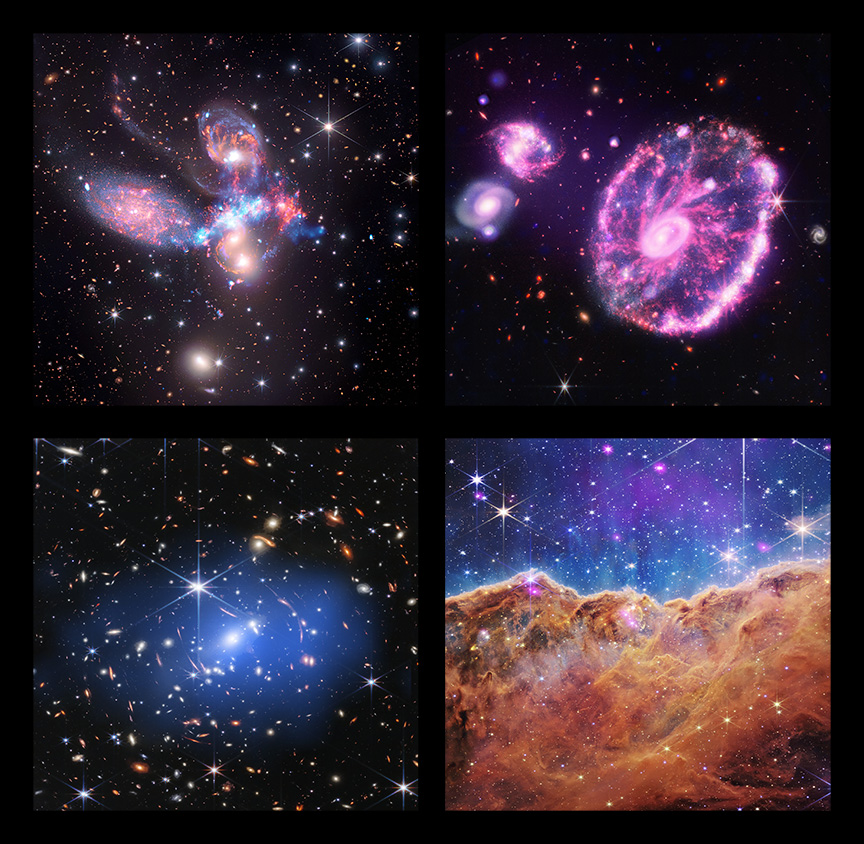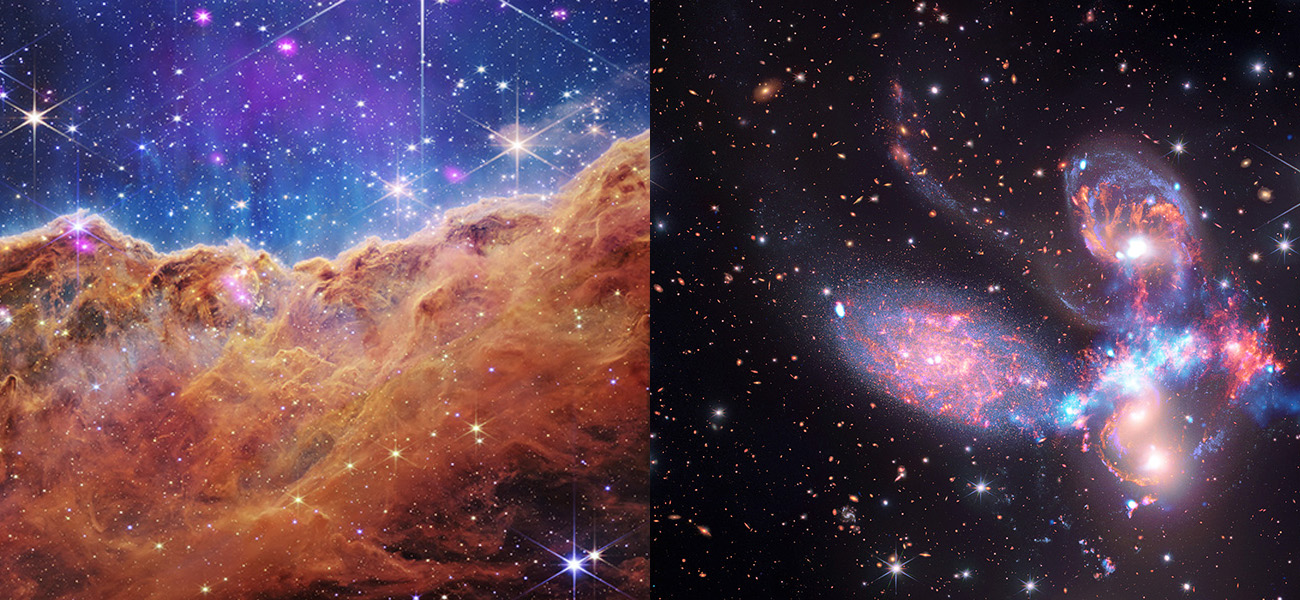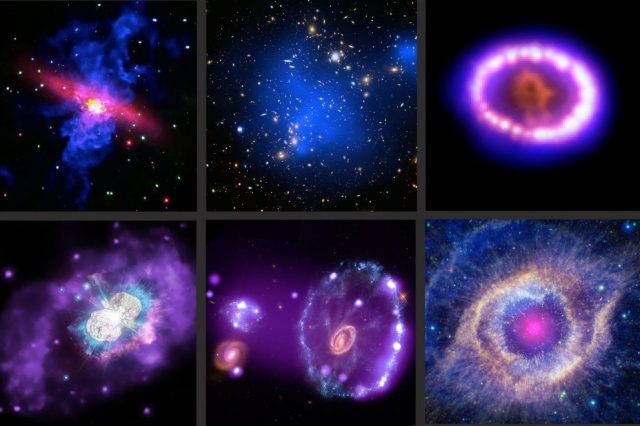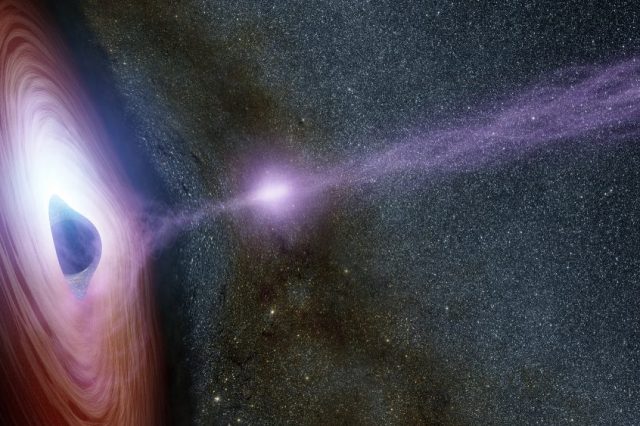Scientists combined data gathered by the James Webb Space Telescope with data from the Chandra X-ray Observatory and the results are breathtaking.
We have come an awesome way from exploring the universe since the very first telescope was created. An eyeglass maker from the Netherlands, Hans Lippershey, filed a patent in 1608 for the earliest known telescope. Despite the fact that Lippershey did not receive a patent for his invention, word of the invention soon spread throughout Europe, and Galileo went on to develop the very first tool specific for astronomy and observing the heavens.
Fast forward a few hundred years, and mankind has some of the most powerful telescopes in history working together to explore the vastness of space. Recently, astronomers thought it would be productive to combine data gathered by the James Webb space telescope and the Chandra X/Ray observatory, and the results are mind-boggling.
The Chandra X-rays were combined with images from the James Webb Space Telescope that were released early in the project. The telescope released images of four objects (Stephan’s Quintet, Cartwheel Galaxy, SMACS 0723.3–7327, and NGC 3324, The Cosmic Cliffs of the Carina Nebula) after it finished its commissioning process. Compared to Webb’s infrared view, Chandra’s data typically show higher-energy phenomena (such as superheated gas). It is expected that data from these telescopes will be combined in the future to study a variety of objects.
Images from NASA’s newly commissioned James Webb Space Telescope were released in the summer of 2022. Within minutes, these stunning images appeared everywhere, from the front pages of news outlets as the world gasped in awe, seeing what no other telescopes had ever seen.
But in the journey of exploring the universe, Webb, however, is not alone, and a series of other telescopes are there to help it make unprecedented discoveries. The Webb telescope is designed to work in conjunction with NASA’s many other telescopes and facilities, both on and off the ground. Combined with X-ray data collected by the Chandra X-ray Observatory, Webb’s first images illustrate how the power of any telescope is strengthened when it is combined with others.

Composite showing Webb and Chandra data combined. Credit: X-ray: NASA/CXC/SAO; IR (Spitzer): NASA/JPL-Caltech; IR (Webb): NASA/ESA/CSA/STScI.
Here is what Webb and Chandra produce together
Stephan’s Quintet
Gravity choreographs a dance between Stephan’s Quintet’s four galaxies. An interloping galaxy at a different distance is the fifth galaxy on the left. A Webb image (red, orange, yellow, green, blue) of this object displays never-seen-before details about these interactions, including sweeping gas tails and bursts of star formation. Based on Chandra data (light blue), scientists have discovered a shock wave heating gas to tens of millions of degrees as one galaxy passes through another at a speed of 2 million miles per hour. NASA’s now-retired Spitzer Space Telescope also contributes infrared data to this new composite (red, green, blue).
Cartwheel Galaxy
About 100 million years ago, the Cartwheel galaxy collided with another smaller galaxy outside the field of this image. Star formation was triggered when the smaller galaxy punched through the Cartwheel and caused stars to appear around its outer ring in addition to elsewhere in the galaxy. As shown in the chart above, Chandra (blue and purple) detects X-rays coming from superheated gases, exploding stars, neutron stars and black holes that are pulling material from companion stars. As seen in Webb’s infrared view (red, orange, yellow, green, blue), the Cartwheel galaxy is surrounded by many more distant galactic cousins that were not involved in the collision.
SMACS 0723.3–7327
According to Webb data, SMACS J0723 is a large galaxy cluster with hundreds of galaxies, which lies at a distance of 4.2 billion light-years. A galaxy cluster, however, contains much more than just its galaxies. X-rays are the only way to see vast reservoirs of superheated gas inside these structures, as they are among the largest structures in the universe. Based on Chandra data (blue), this image shows gas with temperatures of tens of millions of degrees, weighing approximately 100 trillion times the mass of the Sun, much greater than all the galaxies in the cluster combined. Even more of the cluster’s mass is composed of invisible dark matter.
NGC 3324, The Cosmic Cliffs of the Carina Nebula
One of my absolute favorites from Webb. Over a dozen individual X-ray sources can be seen in Chandra’s data of the “Cosmic Cliffs” (pink). In stellar terms, these stars are very young, being mostly located in the outer region of the Carina Nebula cluster with ages between 1 million and 2 million years. A star that is young is brighter in X-rays than an old star, making X-ray studies a great way to distinguish stars in the Carina Nebula from the stars in the Milky Way. Hot gas from the three hottest and most massive stars in the star cluster is likely to be the source of diffuse X-ray emission in the top half of the image. All of them are outside the field of view of the Webb image. Colors used in the Webb image include red, orange, yellow, green, cyan, and blue.
Have something to add? Visit Curiosmos on Facebook. Join the discussion and participate in awesome giveaways in our mobile Telegram group. Join Curiosmos on Telegram Today. t.me/Curiosmos




